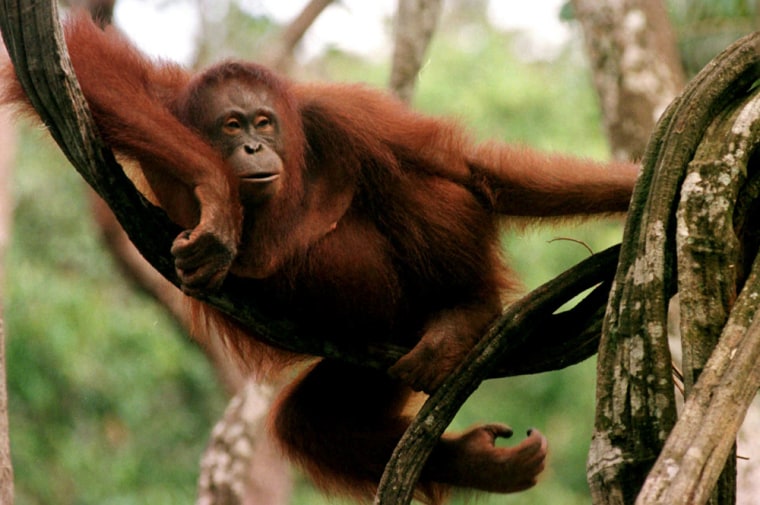Maybe walking upright on two legs isn't such a defining human feature after all.
Scientists who spent a year photographing orangutans in the rain forest say the trait probably evolved in ancient apes navigating the treetops long before ancestors of humans climbed to the ground — a hypothesis that contradicts science museums the world over.
But it's more in tune with fossil evidence, contends Robin Crompton of the University of Liverpool, who co-authored the report in Friday's edition of the journal Science.
"An increasing number of people have been questioning this old 'up from the apes' idea" of how bipedalism evolved, Crompton said.
The popular explanation: Some chimpanzee-like creature that dragged its knuckles on the ground descended from trees into grasslands, and gradually straightened up to walk like modern humans.
Yet climate data and fossils of such creatures as the famed Lucy suggest that early ancestors of humans lived in forests for far longer, and could move on two or four legs.
Think orangutans just swing around? Maybe in zoos. Actually, it is orangutans — not the chimps who genetically are humans' closest relatives — that can walk most like people, Crompton said.
Recording orangutans in Sumatra, Susannah Thorpe of Britain's University of Birmingham measured something counterintuitive: When they move to the skinniest branches, where the tastiest fruit grows, they stand stiffly straight-legged, like a person.
Why? They've got great long toes to wrap around skinny branches and hang on, balancing with one arm overhead while the other reaches for food.
Evolution requires a reason for such a special skill. Thorpe compares the orangutans' walking-in-treetops to the straight-legged gait of athletes running on springy tracks. Bending knees makes leg muscles work harder, she explains. Squatting makes more sense for chimps and gorillas, who developed stronger forearms as they climbed up and down big trees, than for smaller orangs, who spend all day in trees to avoid tigers.
"It's energetically quite economical for orangutans to feed and move on these bendy branches using bipedalism," she concludes.
Other evolution experts praised the work, but aren't convinced. Why would chimps lose that bipedal ability while whatever became human retained it, asked Will Harcourt-Smith of the American Museum of Natural History in New York.
"Another view of this might be that actually, our ancestor was rather good at doing a number of things," said Harcourt-Smith, who believes there were several gradual shifts to walking upright instead of one big leap.
Evolution aside, the new insight into how orangutans reach their food may help efforts to conserve the dwindling habitat of these endangered apes, Crompton said.
